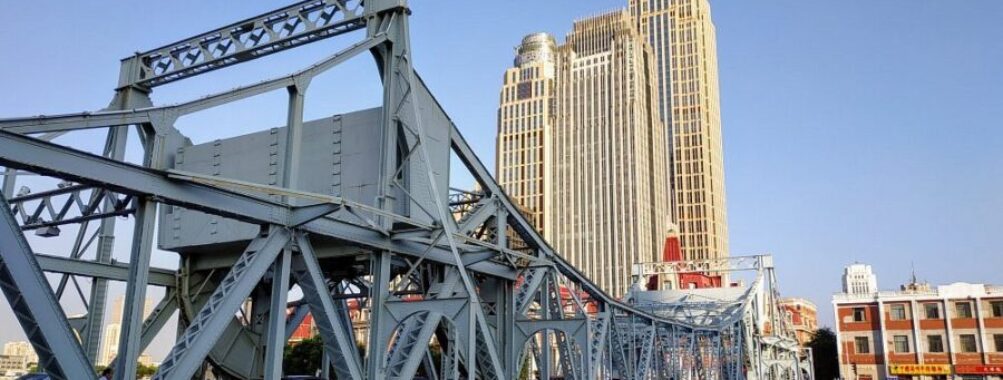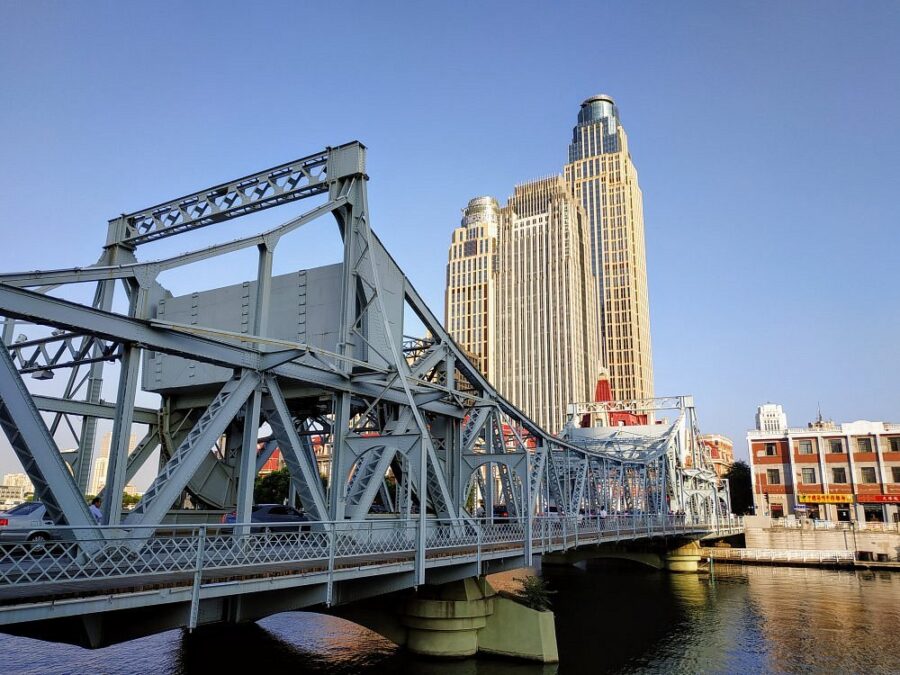
Jiefang Bridge Wharf
Table of Contents
- History and Significance
- Main Attractions and Activities
- The Bridge Itself
- Hai River Cruise
- Fisherman’s Wharf Market
- Dancing Grannies
- Visitor Experience
- Tips for Visitors
- Accessibility and Facilities
- Unique Features
- Overall Impressions
- Pros and Cons
- Pros:
- Cons:
- Should You Go?
- Location
- Places to Stay Near Jiefang Bridge Wharf
- Find and Book a Tour
- Explore More Travel Guides
History and Significance

Picture this: It’s 1927. Tianjin’s Hai River is choked with steamships, opium smugglers, and European traders haggling over silk and tea. Right at the heart of it all? Jiefang Bridge Wharf—then known as the “French Concession Bund,” where colonial powers docked their ambitions.
Fast forward to today. The opium’s gone (thankfully), but the wharf still wears its history like a weathered sailor’s tattoo. The current Jiefang Bridge, rebuilt in 2012, is a modern steel beast, but its soul is old-school Tianjin: a place where Chinese grit and foreign influences collided for centuries. Those rusted bollards? They once tied up British gunboats. The cobblestones near Pier 3? Probably trodden by everyone from Qing Dynasty merchants to 1930s jazz musicians.
Main Attractions and Activities
The Bridge Itself
By day, it’s a functional river crossing. By night? A lightshow masterpiece. The LED-lit arches reflect on the Hai River like a neon dragon—best viewed from the wharf’s west side with a Tsingdao beer in hand.
Hai River Cruise
Hop on a 30-minute sightseeing boat (¥80) to see Tianjin’s “European Quarter” from the water. The guides rattle off facts in rapid Mandarin, but even if you don’t catch details, the view of colonial banks and glittering skyscrapers is worth it.
Fisherman’s Wharf Market
Not to be confused with San Francisco’s version. This open-air market sells:
-
Fresh-caught river crabs (try them steamed with vinegar)
-
“Vintage” Mao badges (most made last Tuesday)
-
Hand-pulled caramel art (watch old men twist molten sugar into dragons)
Dancing Grannies
Come dusk, the waterfront transforms into an open-air disco. Tianjin’s legendary dama (middle-aged women) take over with synchronized line dancing to thumping Chinese pop. Join in—they’ll happily teach you the steps between cigarettes.
Visitor Experience
Here’s the thing about Jiefang Wharf: it’s messy, loud, and utterly alive. Unlike Shanghai’s sanitized Bund, this place hasn’t been polished into oblivion. Fishing boats still unload their catch at dawn, old men play chess on overturned crates, and the air smells like fried dough sticks and diesel.
The best time? Golden hour. As the sun dips behind the Tianjin World Financial Center, the bridge lights flicker on, street food carts fire up their woks, and the wharf becomes this surreal mix of ancient river culture and Blade Runner aesthetics.
Word of warning: English is scarce. Menus, signs, even boat tickets—all Mandarin. Download Pleco or bring a sense of adventure.
Tips for Visitors
-
Timing: Evenings (5-9 PM) are prime for people-watching and photos.
-
Cash is King: Most vendors don’t take WeChat Pay. Withdraw ¥200+ at the ICBC ATM near Pier 2.
-
Footwear: Those cobblestones are treacherous in heels or flip-flops.
-
Bargaining: Expected at the market—start at 40% of the asking price.
-
Avoid Mondays: Many river cruises don’t operate.
Accessibility and Facilities
-
Wheelchair Access: Patchy. The wharf has ramps, but the market area is all uneven stone.
-
Toilets: Public ones near the cruise ticket office (bring tissues—they often run out).
-
Metro: Line 3 to Xiaobailou Station, then a 10-minute walk.
-
Seating: Scarce. Grab a spot on the river wall or at Blue Frog Bar (overpriced but has toilets).
Unique Features
What makes this wharf special?
-
The Light Contrasts: 19th-century warehouses sit under futuristic skyscrapers—perfect for Instagram.
-
Real Working Waterfront: Not a museum—actual fishermen still work here.
-
The Soundtrack: Squawking gulls, boat horns, and 1980s Chinese pop from dancing grannies’ speakers.
Overall Impressions
Jiefang Bridge Wharf is like Tianjin itself: unpretentious, layered, and stubbornly authentic. It won’t spoon-feed you curated “culture”—you have to dig for it between the fish scales and disco beats.
Is it glamorous? No.
Is it memorable? Hell yes.
Pros and Cons
Pros:
- Free to explore (unless you boat or eat)
- Killer night photography spots
- More “local” than touristy river cruises
- That unbeatable old-meets-new Tianjin vibe
Cons:
Minimal English support
Gets packed on summer weekends
Some areas smell… fishy (literally)
Should You Go?
Only if you want to see the real Tianjin. This isn’t a manicured postcard—it’s a living, breathing, slightly chaotic waterfront where history hasn’t been bulldozed for luxury condos. Come for:
-
Sunset views with a side of street food
-
People-watching that beats any reality show
-
The thrill of discovering a place most guidebooks gloss over
Just watch your step near the fish gutting station. Trust me.
Location
Places to Stay Near Jiefang Bridge Wharf
Find and Book a Tour
Explore More Travel Guides
No reviews found! Be the first to review!